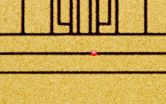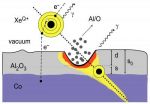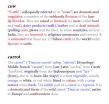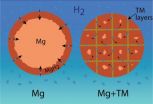(Press-News.org) As a crippling drought grips much of the Southern and Southwestern United States, the population continues to grow and water resources become scarcer. One way to address the problem is by a combination of modern engineering and ancient social principles, outlined in a new paper on rainwater harvesting that will be presented at the 2011 ASME International Mechanical Engineering Congress and Exposition.
Author John Whear, biomedical engineer at the Cancer Therapy & Research Center at The University of Texas Health Science Center at San Antonio, examines how to manage rainwater as a common pool resource. Whear studied management techniques for other common pool resources like fisheries and forests, as well as organizations developed for sharing scarce water, such as the Edwards Aquifer Authority and social systems in pre-colonial India.
Drawing from game theory, Whear argues that a successful common pool resource (CPR) depends on participant behavior, which requires monitoring and management. Effective monitoring can be made simple with the technology available today, he said.
Along with reducing pressure on ground and surface water supplies, Whear proposes that large-scale rainwater harvesting (RWH) systems can also lesson the threat of deadly flash flooding common to urban areas in Central and South Texas.
By catching large amounts of the fast-falling rainwater and draining it slowly over several days, the RWH systems can decrease runoff and increase the amount that is absorbed into the ground and recharge zones.
"Once recharge can be determined with an adequate degree of certainty, the acquired data could be used for the economic benefit of participants," Whear said. "Possibilities include a flood control tax abatement and aquifer recharge credit."
Whear first presented a rainwater harvesting paper last year at the 2010 ASME conference. In that paper he examined the options for distributing harvested rainwater and began contacting water management organizations.
"That's when I learned that rainwater harvesting is as much a social issue as it is an engineering one," he said.
### END
Successful rainwater harvesting systems should combine new technology with old social habits
2011-09-01
ELSE PRESS RELEASES FROM THIS DATE:
NIST achieves record-low error rate for quantum information processing with one qubit
2011-09-01
Thanks to advances in experimental design, physicists at the National Institute of Standards and Technology (NIST) have achieved a record-low probability of error in quantum information processing with a single quantum bit (qubit)—the first published error rate small enough to meet theoretical requirements for building viable quantum computers.
A quantum computer could potentially solve certain problems that are intractable using today's technology, even supercomputers. The NIST experiment with a single beryllium ion qubit, described in a forthcoming paper,* is a milestone ...
Researchers expand capabilities of miniature analyzer for complex samples
2011-09-01
It's not often that someone can claim that going from a positive to a negative is a step forward, but that's the case for a team of scientists from the National Institute of Standards and Technology (NIST) and private industry. In a recent paper,* the group significantly extended the reach of their novel microfluidic system for analyzing the chemical components of complex samples. The new work shows how the system, meant to analyze real-world, crude mixtures such as dirt or whole blood, can work for negatively charged components as well as it has in the past for positively ...
Ion armageddon: Measuring the impact energy of highly charged ions
2011-09-01
Much like a meteor impacting a planet, highly charged ions hit really hard and can do a lot of damage, albeit on a much smaller scale. And much like geologists determine the size and speed of the meteor by looking at the hole it left, physicists can learn a lot about a highly charged ion's energy by looking at the divots it makes in thin films.
Building upon their work for which they were recently awarded a patent,* scientists at the National Institute of Standards and Technology (NIST) and Clemson University have measured the energy of highly charged ion impacts on a ...
Solar industry responsible for lead emissions in developing countries
2011-09-01
Solar power is not all sunshine. It has a dark side—particularly in developing countries, according to a new study by a University of Tennessee, Knoxville, engineering professor.
A study by Chris Cherry, assistant professor in civil and environmental engineering, found that solar power heavily reliant on lead batteries has the potential to release more than 2.4 million tons of lead pollution in China and India.
Lead poisoning causes numerous adverse health effects, including damage to the central nervous system, the kidneys, the cardiovascular system, and the reproductive ...
Word association: Princeton study matches brain scans with complex thought
2011-09-01
In an effort to understand what happens in the brain when a person reads or considers such abstract ideas as love or justice, Princeton researchers have for the first time matched images of brain activity with categories of words related to the concepts a person is thinking about. The results could lead to a better understanding of how people consider meaning and context when reading or thinking.
The researchers report in the journal Frontiers in Human Neuroscience that they used functional magnetic resonance imaging (fMRI) to identify areas of the brain activated when ...
Iron 'Veins' Are Secret of Promising New Hydrogen Storage Material
2011-09-01
With a nod to biology, scientists at the National Institute of Standards and Technology (NIST) have a new approach to the problem of safely storing hydrogen in future fuel-cell-powered cars. Their idea: molecular scale "veins" of iron permeating grains of magnesium like a network of capillaries. The iron veins may transform magnesium from a promising candidate for hydrogen storage into a real-world winner.
Hydrogen has been touted as a clean and efficient alternative to gasoline, but it has one big drawback: the lack of a safe, fast way to store it onboard a vehicle. ...
Registration Opens September 1 for 4th Annual Renton FilmFrenzy, a 50-Hour Filmmaking Competition with $1,700 in Cash Prizes; Filmmakers will Take Over Renton from Oct. 7-9
2011-09-01
It will be "lights, camera, action" in Renton from October 7-9, when aspiring, ahead of the curve filmmakers take over the city for the fourth annual Renton FilmFrenzy, a 50-hour filmmaking competition. Last year, 25 filmmaking teams competed for $1,700 in cash prizes and the coveted Curvee Awards.
"Thanks to our partnerships with SIFF, Reel Grrls, theFilmSchool, area filmmaking programs, and the Renton Arts Commission, the Renton FilmFrenzy continues to expand and has become an integral part of the growing and strong Renton arts community," said ...
Sandfly saliva provides important clues for new Leishmaniasis treatments
2011-09-01
Bethesda, MD—For millions of people who live under the constant threat of Leishmania infection, a new discovery by Brazilian scientists may lead to new breakthroughs, preventing these parasites from taking hold in the body or reducing the severity of infections once they occur. In a new report appearing in the Journal of Leukocyte Biology (http://www.jleukbio.org), scientists show that specific molecules found in the saliva of the sandfly—a small flying insect that is the vector for the parasite—make it possible for Leishmania to evade neutrophils and live within human ...
Celebrate the Seventh Annual Cobra Polo Classic Benefiting Ronald McDonald House Charities
2011-09-01
Polo is possibly the oldest sport, period. The first experience with a mallet, pony and a round object were recorded nearly two thousand years ago. Polo is the sport known to royalty around the world.
On Sunday, September 11th over twelve-hundred guests will celebrate the seventh annual Cobra Polo Classic benefiting Ronald McDonald House Charities of Spokane. "It is the most prestigious event in the Inland Northwest," reports Mike Forness, RMHC of Spokane Executive Director. Sky divers, gourmet food and wine, cigar and Dry Fly whiskey tent, safari escape women's ...
SER2011 Mexico call to action
2011-09-01
The delegates of the Society for Ecological Restoration´s 4th World Conference on Ecological Restoration (SER2011) congratulate the Parties of the Convention on Biological Diversity (CBD) for their practical and forward looking Strategic Plan 2011-2020, including Targets 14 and 15 in which the Parties have agreed that by 2020, ecosystems of particular importance to water security, human health, and sustainable livelihoods are restored, and their resilience and contribution to carbon stocks enhanced, through conservation and restoration, including the restoration of at ...





